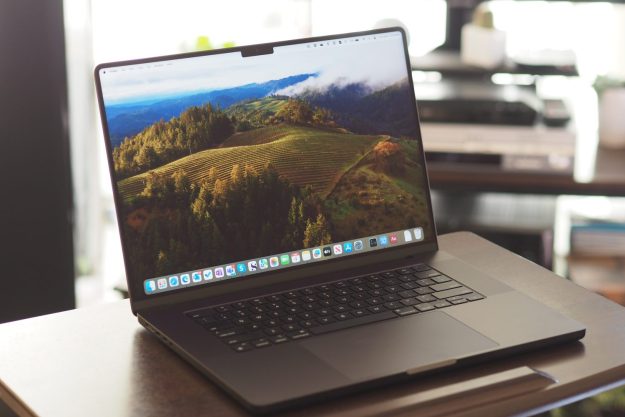MacBooks have long had a Low Power Mode option that users can enable to cut down on some of the extra features and lower settings to save as much battery life as possible. But with the 2021 16-inch MacBook Pro model with the M1 Max chip, Apple added a new option designed more for those who are using their MacBooks as a desktop replacement to get serious work done: It’s called High Power Mode, and it’s essentially the opposite of Low Power.
If that sounds like a perfect fit for your workload and you know that you’ll be near an outlet to save your battery, we’ll show you how to enable High Power Mode and what to expect from it.
What does High Power Mode do, exactly?
Apple doesn’t give out all the details, but High Power Mode is designed to let the MacBook Pro deliver higher performance for the most intensive workloads. Part of that includes ratcheting up fan speeds to higher levels so internal components cool down faster and become more efficient.
Apple recommends using this mode when tackling higher-end design work, like color-grading 8K ProRes 4444 files and 8K DNxHR video. If you’re working on projects that are taking up a lot of RAM and require your display visuals to be maxed out, High Power Mode can be of help.
Keep in mind, you’ll need the right MacBook Pro models to see this feature. It was first added with the 2021 16-inch MacBook Pro … but only those using the M1 Max chip, not the M1 Pro chip. It won’t work with smaller 13-inch MacBook Pros or lesser chips, so you may want to check your configuration to make sure you have the right model.
How to enable High Power Mode on 16-inch MacBook Pros
As always, it’s a good idea to make sure your MacOS is updated and your battery is charged before you begin. High Power Mode can work on battery power or when connected to a power adapter, although it will drain batteries more quickly.
Step 1: Log into your Mac and choose the Apple menu icon in the upper-left corner of the MacOS home screen.
Step 2: Select System Preferences.
Step 3: When System Preferences opens, select the Battery icon.

Step 4: Look at the left-side menu, and you will see options for both Battery and Power adapter. This will control how your MacBook Pro behaves depending on its power source. If you choose Battery, the settings you change will apply to battery power only, and likewise for the Power adapter option. It’s common to choose High Power Mode only for the power adapter so that there’s less risk of running your battery down, but you can choose either power option or both.

Step 5: Look for the section called Energy mode, and select the pop-up menu beside it. Here, if you have the right MacBook Pro model, you should see options for Low Power, Automatic, and High Power. Select High Power to continue.
Step 6: Confirm, and your MacBook Pro will now switch to its High Power Mode. You can switch back at any time from the menu or by choosing the Restore defaults button below. If you aren’t sure if your MacBook Pro is currently in High Power Mode or not, you can easily check by selecting the Battery icon in the upper-right corner of MacOS. Here, compatible MacBook Pros will have a “High Power Mode” section showing if it’s on or off.

If you’re looking to buy a new MacBook Pro, Apple is planning on MacBook models featuring its new M2 chip, too. There will also be an M2 Max version of the processor, so make sure to look for that model when configuring your MacBook Pro. However, tests have shown that the M2 chip struggles with SSD read/write speeds at this time, so there may be a cost to upgrading.
Editors' Recommendations
- MacBook Pro OLED: Here’s everything we know so far
- How to delete messages on your Mac
- The XPS 16 is fighting an uphill battle against the MacBook Pro
- Best Buy’s deal of the day is $150 off the MacBook Air M2
- You can still buy the M1 MacBook Air, and it’s cheaper than ever




